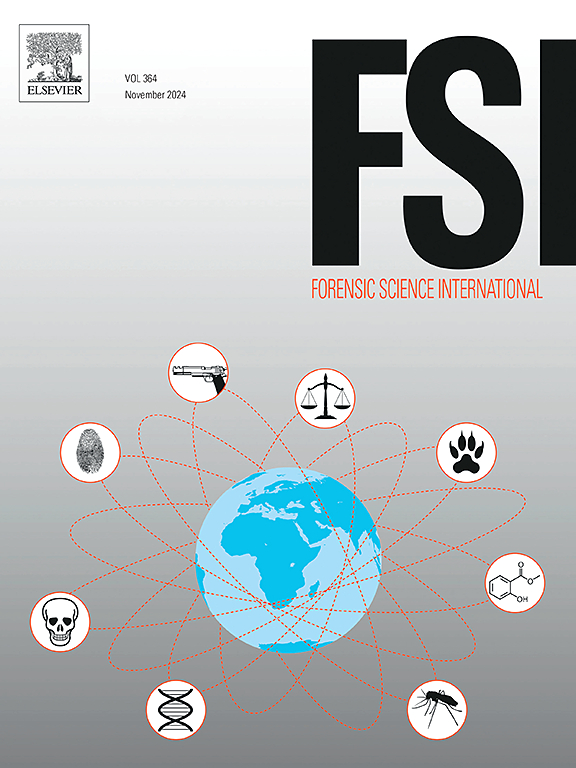从图像到检测:血液模式分类的机器学习
IF 2.2
3区 医学
Q1 MEDICINE, LEGAL
引用次数: 0
摘要
血迹模式分析(BPA)帮助我们了解血迹是如何形成的,重点是它们的大小、形状和分布。这有助于犯罪现场重建,并提供洞察受害者的位置和犯罪调查。BPA面临的一个挑战是区分不同类型的血迹,比如来自枪械、撞击或其他机制的血迹。我们的研究重点是区分冲击飞溅血迹和射击后向飞溅血迹。我们通过提取设计良好的单个污点特征、应用有效的数据整合方法和选择增强分类器来区分模式。因此,我们的模型在测试数据集上显示出具有竞争力的准确性和效率,这表明它在类似场景中的潜力。本文章由计算机程序翻译,如有差异,请以英文原文为准。
From images to detection: Machine learning for blood pattern classification
Bloodstain Pattern Analysis (BPA) helps us understand how bloodstains form, with a focus on their size, shape, and distributions. This aids in crime scene reconstruction and provides insight into victim positions and crime investigation. One challenge in BPA is distinguishing between different types of bloodstains, such as those from firearms, impacts, or other mechanisms. Our study focuses on differentiating impact spatter bloodstain patterns from gunshot backward spatter bloodstain patterns. We distinguish patterns by extracting well-designed individual stain features, applying effective data consolidation methods, and selecting boosting classifiers. As a result, our model exhibits competitive accuracy and efficiency on the tested dataset, suggesting its potential in similar scenarios.
求助全文
通过发布文献求助,成功后即可免费获取论文全文。
去求助
来源期刊

Forensic science international
医学-医学:法
CiteScore
5.00
自引率
9.10%
发文量
285
审稿时长
49 days
期刊介绍:
Forensic Science International is the flagship journal in the prestigious Forensic Science International family, publishing the most innovative, cutting-edge, and influential contributions across the forensic sciences. Fields include: forensic pathology and histochemistry, chemistry, biochemistry and toxicology, biology, serology, odontology, psychiatry, anthropology, digital forensics, the physical sciences, firearms, and document examination, as well as investigations of value to public health in its broadest sense, and the important marginal area where science and medicine interact with the law.
The journal publishes:
Case Reports
Commentaries
Letters to the Editor
Original Research Papers (Regular Papers)
Rapid Communications
Review Articles
Technical Notes.
 求助内容:
求助内容: 应助结果提醒方式:
应助结果提醒方式:


